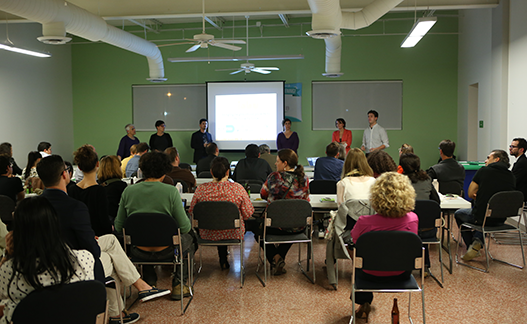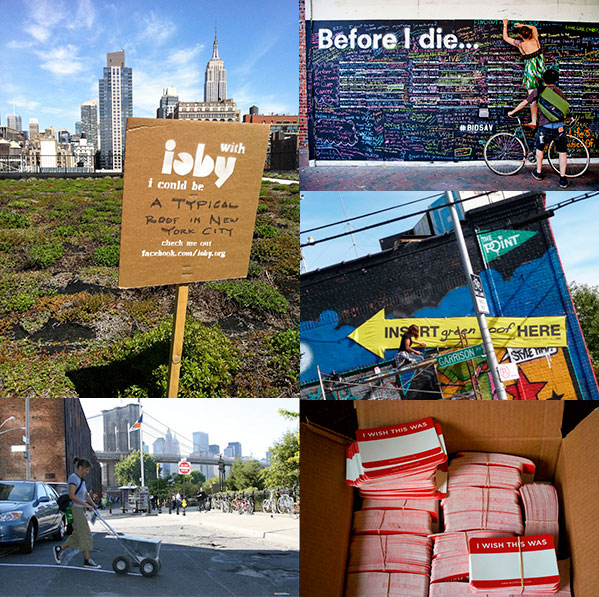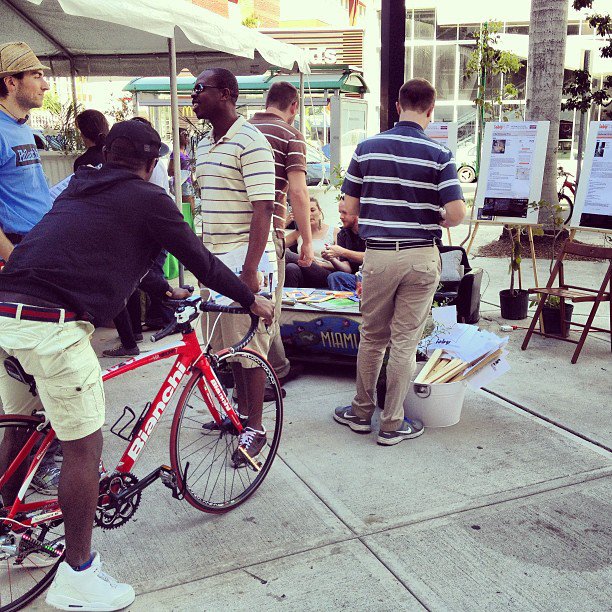Today we are happy to announce the release of ioby’s Guide to Getting Good Done in Miami and ioby’s Guide to Getting Good Done in Memphis. Both cities’ guides include paths to getting good done working with government and without government’s assistance and permission. We are very grateful to Mike Lydon and Tony Garcia of StreetPlans, Marta Viciedo, Sarah Newstok and Ellen Roberds of Livable Memphis, and staff at both respective municipalities for their contributions to creating these documents. Enjoy, share and please send feedback to erin@ioby.org
Category Archives: Miami
Our Miami Public Space Challenge Open!
We are proud to announce our continued partnership with The Miami Foundation, the Health Foundation of South Florida and the Miami Herald on the second Our Miami Public Space Challenge. On the challenge, Miami residents can suggest ideas to improve public spaces anywhere in Miami Dade County.
Vibrant public spaces build a stronger sense of community by sparking social engagement between Miamians. Anyone can post ideas: individuals, groups, for-profit companies or nonprofit organizations.
The deadline for submissions is April 8, 2014. Submit yours now.
Click here check out some of the funded projects from 2013’s Public Space challenge.
Getting Good Done Miami
The January 30 Getting Good Done Miami conversation at the Miami Green Lab was an exciting event. More than 60 of you came out on a rainy night to share practical skills and challenges in doing positive community-based work in Miami.
A full podcast from the event will be available soon. Until then, you can read the storify here.
We were really grateful to have several members of Miami city and Miami-Dade county staff at the event to work with community activists on expediting their great ideas for Miami. Special thanks to Nichole Hefty and Susannah Troner from the Miami-Dade County Office of Sustainability, for initiating this partnership with ioby that is now one year in the making.
We also wanted to recognize Christian Guerrero, the Chief of the Environmental Plan Review at the county, Carlos Hernandez from the County Wastewater Division, and Patrice Gillespie Smith, from the County Community Image Manager for bringing their great ideas to the table. Thanks also to Glen Hadwen from the City of Miami Sustainability for hosting the event at the Miami Green Lab.
Our speakers, Marta Viciedo, Eric Katz, Ileana Collazo and Gayle Zalduondo shared fascinating presentations with us about their projects (all found on ioby.org/miami).
Notable among the practical skills shared to Get Good Done were a focus on taking small steps initially to build support and work within a limited budget at first. The speakers shared that using a light, tactical intervention at first, like a pop-up park, pop-up parklet, or even a pop-up train station, can be great ways to introduce new ideas to a community. Many speakers talked about building creative partnerships and working in neighborhoods where they don’t live and building community, person to person. Marta mentioned that it’s really important to “be nice” when you’re asking people to help you with your ideas. Ileana noted that creative alliances, like hers between artists and developers, can be long lasting. Eric shared his passion for transit-oriented development and said that it is a useful skill he’s acquired in articulating his vision for bringing ecological commodities to all Miami-Dade residents. He emphasized the importance of bringing other people into his network by connecting to them to a shared vision, similar to how one might do so in a grant proposal. Gayle described her surprise when an informal conversation with a new friend about her idea to install a public chalkboard in Wynwood ended up landing her a partnership with a women and girls organization at Miami Dade College.
The Office of Sustainability at Miami-Dade County offered to create a resource guide to try to help ioby leaders and community groups figure out how to get different types of permitting. Miami-Dade County will share this resource guide with all ioby project leaders once finalized. The Office of Sustainability also offered to assist in making connections with other County staff members (and municipal staff when possible). Office of Sustainability staff can be reached at 305-375-5593 or green@miamidade.gov. It’s a good idea to contact ioby first so we can help you prepare for your meeting with the county. All ioby staff are notified when you email miami@ioby.org. If you have an idea for an ioby campaign visit ioby.org/idea or email projects@ioby.org.
Thanks to Luis Munoz for these great photos!
Awesome Project: Chalked Up Miami
Candy Chang revolutionized public arts when she stuck a “Hello, my name is…” sticker to a fence, with the phrase to fill in “I wish this was…”. That was 2010. Since then, street level engagement tactics like stickers, Before I Die pledges, art projects like Eve Mosher’s Insert ____ Here and High Water Line, and ioby’s reimagination project have made it easier than ever for residents of a community to take the first steps in activism.
Enter Chalked Up Miami.
Chalkboards use the same lighter, cheaper, quicker tactics for public generated content. But these chalkboards are going to be located on construction fencing, so that places that most people would rather avoid become places for engagement.
Building off her successful launch at Art Basel, Gayle’s big idea is to use chalkboards to enrich the urban experience in six sites across Miami.
Help Gayle and her team to continue the momentum from her initial project at Art Basel and start the Chalked Up Miami movement now. Donate now, and be generous: your gift is an investment in a greater Miami.
Awesome Project: M-Path Park
What has a diverse population, the Metro Rail, Bus way, M-Path, and is green all over? Downtown Dadeland!
Well, except for that last part.
This intersection of many types of transportation options mean that this is a great gathering place for people coming from many diverse places by a multitude of means. Dadeland resident and urban planner Eric Katz believes that the only thing missing from this is open green space.
Eric’s big idea is to create an M-Path Park in this Southwest Miami metropolitan hub that is convenient and safe for transit users, joggers, residents, cyclists who can all enjoy the benefits of a local open space. Imagine the possibilities! You could take the train home from work and walk through nature to unwind on your way home, take the bus home from an outdoor concert in the park, or overachieving downtown Miami residents could bike down the M-Path, swinging in to a local grocery store to pick up a picnic lunch for Dadeland’s urban oasis.
Help Eric and his team to build a grassroots community led project to create momentum for this park. Donate now, and be generous: your gift is an investment in a greater Miami.

Our Miami Public Places Challenge
ioby is proud to be a part of the team behind the Miami Foundation’s Our Miami Public Spaces Challenge. We are super duper excited to be providing the training and tools to support Miami civic leaders in making human-scale interventions in their neighborhoods with the support and assistance of their neighbors.

You can map your ideas for public space on the Our Miami site, and ioby will make crowdfunding your great idea ridiculously simple and straightforward, not to mention accomplishable. We help leaders organize all the resources necessary to successfully change the world, one project at a time. All the Our Miami ideas that are currently crowdfunding are here.
How do we do this? Through personal interaction. At ioby, we stand for the opposite of NIMBY, supporting citizen-led, neighbor-funded change. ioby is a vehicle to make positive change quickly, through the use of our crowd-resourcing platform designed for people with great ideas to make their neighborhoods stronger and more sustainable. On ioby, anyone with a good idea can get more than just money. You can also recruit volunteers and share ideas with a likeminded community. And, in the NYC and Miami metro areas, ioby offers fiscal sponsorship for the majority of our projects – this means we handle the headache and hassle of accepting tax-deductible donations, empowering leaders to do what they do best.
During the Public Spaces Challenge we will offer four specialized fast-cash trainings in Miami, sharing 5 years of honed knowledge about running highly successful crowd-funding and crowd-resourcing campaigns and providing a clear and simple path to success spelled out in best practices. The trainings are on Wednesday, August 28, September 4, 11 and 18. Sign up here.
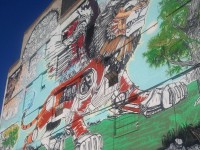
Comeback Cities: Detroit & Miami
We were privileged to have ioby’s own Karja Hansen take part in the inaugural Placemaking Leadership Council, convened by Project for Public Spaces, so that ioby could spend some time in America’s leading current comeback city, Detroit, as an inspiration for ioby’s work in Miami.
The Leadership Council was an incredible 2.5 day working group of 300 “zealous nuts” from all walks of life and profession, who believe that creating place is integral to creating community and value. And we had Detroit as not only our backdrop, but also as our living classroom. Motor City. Paris of The Midwest. Red Town. The D. Whatever you call it, we’re quite taken with it.
Detroit is a city with a surprising amount in common with Miami. Built in different eras, the cities nonetheless share both a structure and, to some degree, a culture. Not a culture of geography or population – though there is more than you would think. There is a culture of perseverance, of stick-to-it-ness, as well as stick-it-to-the-man-ness, for sure. And now, a culture of innovation that has only minimal regard for The Way Things Are and The Way Things Are Done.
Miami is often mistaken with the rest of South Florida as being incredibly sprawled out, which yes–it is around the edges, but not nearly so much as the rest of Florida, or the Southeast Region. And it retains much of its historic neighborhood centers. Nor did Miami’s population bleed out into the suburbs. Detroit’s did, leaving the city empty. Things may not be perfect here, but at least it’s inhabited.
And the car. Yes, the car has left just as much of an indelible mark on Miami as it has on the world famous Motor City. What the automobile has wrought on our community that is the most profound, hard to recognize, and hard to repair. Just as important as the physical structure of the street–pavement, buildings, trees, etc–is the activity on the street, the collisions of people which lead to conversations rather than the collision of cars which leads to critical conditions. It is these conditions from which people recoil in fear, until they are isolated from and anonymous to each other, no longer seeing and treating each other as neighbors, rather as strangers.
Detroit is far from dead, it is absolutely ripe with opportunity. Without an active citizenry opportunity is very hard to take advantage of. It’s uncommon to have the right combination of both opportunity and an active citizenry. But that great combination is what has given rise to such an explosive positive shift in Detroit’s center city and neighborhoods, and it is that same combination that we see in Miami. It is people coming together over a common hope and vision for their neighborhoods and seizing opportunity to effect positive change.
Neighborhoods have always been made by the neighbors: the residents, local businesses, and those who choose to spend time there. In Miami, we’re making neighbors, and hope we can lend a hand in making Miami’s neighborhoods stronger and more sustainable.
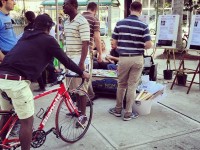
Miami Launch Party
This past weekend we officially launched our Miami office. Despite the city-stopping thunderous downpour of Friday evening over 50 people made it out to celebrate with us on Friday night at The LAB Miami where we showcased our inaugural cohort of 12 projects. These projects highlight the gumption, excitement and accomplishment that is coalescing here. Leaders in their own right, those behind these 12 projects are blazing a trail of citizen led change here in Greater Miami.
Then, on Saturday we participated in the second annual Philanthrofest and, we have to say, it was an incredible and impactful experience. The event’s organizers brought together over 200 of Miami’s most active and meaningful efforts and organizations alongside music and food trucks in a festival atmosphere, and then drawing thousands upon thousands of greater miami residents interested in becoming more civically engaged. We met so many great people, doing so many great things, in so many places — and are super excited about supporting those efforts.
When we started we really had no idea what to expect in Miami, especially on the heels of a report like The Tale of Two Cities. And while my own experience in Miami the past 2.5 years painted the beginnings of a more positive picture, it is always hard to make a distinction between your own experiences and the overall reality. But, since the announcement of the Miami office I have been inundated with interest and I have learned how deep and extensive the level of desire and action for a better, stronger, healthier and more encompassing greater Miami is.
Faced with as many obstacles, historic and new, to a healthily empowered and engaged citizenry, it is not surprising that every time you turn around there are more citizen advocacy groups working to address the needs of the places and ways they live. What is somewhat surprising — but welcome! — is how their efforts are echoed through the various municipal offices of greater Miami-Dade. There is a strong and growing understanding that the citizen is not the customer of the city/county, but a partner.
Part of my work here is to introduce ioby as a tool to potential project leaders and support them to take that leap into working directly on the problems they can solve. The other part is to partner with municipality and citizen to identify and remove the specific barriers to citizens doing this work. I am already making positive headway on a few issues, but the bulk of this work lays ahead of me.
Miami is no different from any other American City at this time, struggling to get ahold of a governance system and budget that has been warped over multiple generations by the pressures of sprawl development, mass consumerism and ever more questionable federal policy. There is still, and will continue to be for some time, much here that can be pointed out as unacceptable — not worth dealing with. But, Miami is quickly surging to the head of the pack of cities who are, nonetheless, overcoming its obstacles and building a brighter future for all residents.
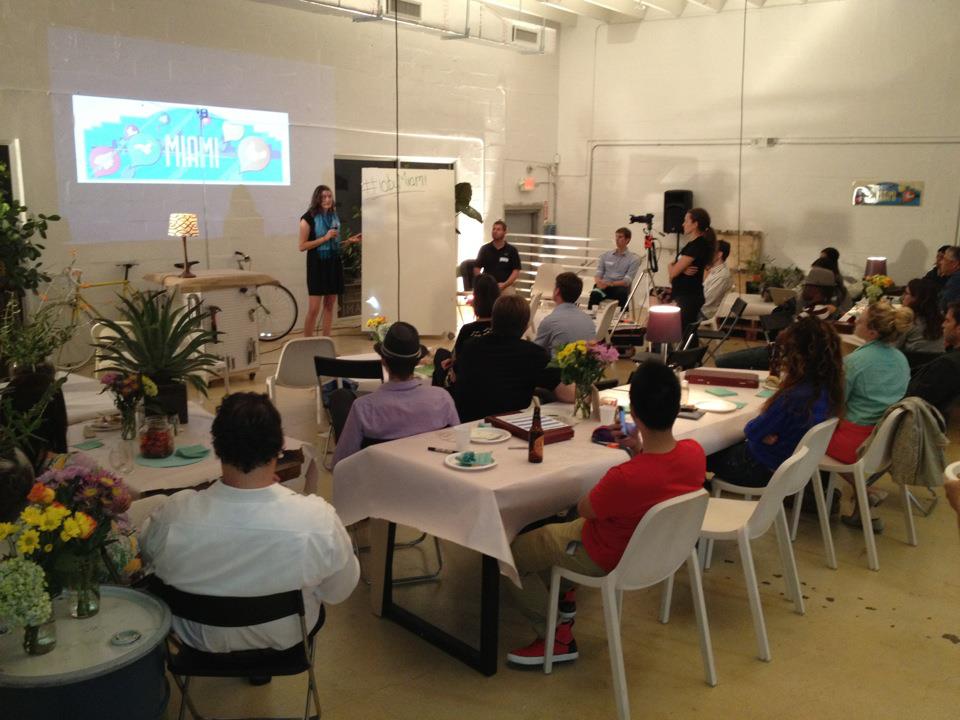
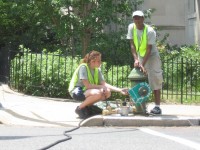
Identifying Obstacles/Barriers to Civic Capacity Building
Since arriving in Miami, I’ve known that it was a city somewhat implacably hostile to change that didn’t stem from big shot developers or “world-class” starchitects (groan). Like many of us, I hear it in passing–the comments about how things will never change, how the corruption is too entrenched, how citizens are too set in their ways and mindsets.
But then I see the reality, which is an ever more energized and engaged citizenry, giving of themselves to create, collaboratively, a better place to live.
The goal of a caring and engaged populace is almost universally shared, from municipal official to municipal resident. The mystery is how.
Part of the problem has to do with political will. Part also has to do with the realistic feasibility of the average citizen navigating municipal bureaucracy as a first step in affecting meaningful local change. Each place has its own unique mix of strengths, opportunities and challenges in these regards.
To focus on the greater Miami area, ioby invites you to join us for a day-long interactive civic hacking symposium. A series of discussions and exercises will help us better understand the barriers to civic betterment and how we can overcome them.
“Tapping” Citizen Energy
An example of one of these obstacles to citizen-led efforts to better our city that I’ve recently run across is the difficulty of accessing communally held and funded resources like water infrastructure. In Washington, DC, civic nonprofits run volunteer events planting over 3,000 trees per year. Once the trees are in the ground, volunteers water them, using a temporary hydrant tap that costs for three days or less just $55/day. For periods from three days to one year, a $700 deposit is all that is due to secure a floating meter and permit.
By contrast, in Miami-Dade, civic groups must pay a non-negotiable $2,500 deposit and must use a floating meter described as too large to fit in the trunk of a car and requiring a truck–a far cry from the modern, sleek and inexpensive floating meter many bike around the city and to water trees in DC.
A $2,500 deposit and truck rental are pretty big barriers to engagement. The disconnect is clear: policies and procedures are designed to serve professional building and landscaping trades as the prime doers, rather than the average citizen.
ioby’s interest is in making it easy to get active for people who want to make their neighborhoods stronger and more sustainable. So, as a first step in building and supporting the capacity for citizen led change, ioby+Miami is securing a long-term lease of a floating meter hydrant tap for use by project leaders and partner events requiring on-site water access.
Do you have ideas for what needs to occur to facilitate citizen- and community-led projects? Contribute your stories and ideas to our launch in Miami. For more information on how to participate, click here.
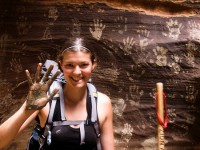
Meet Karja Hansen. Welcome ioby to Miami.
Had you asked me prior to the summer of 2010 if I would ever consider living in Miami, I would have quickly answered no. I’d never been to Miami, but I’d been to Orlando, and Miami was south of that humid hot mess, and from what little I knew of it, populated by shopping malls, sprawl and body obsessed party-goers. Not really my thing. But, I was offered an incredible opportunity to work with incredible visionaries and leaders in my field, and the catch was that they were in Miami. So, I sucked it up and moved on down, expecting to hate Miami but just deal with it. And, wow, was I surprised.
I am just bursting with excitement about ioby en Miami! I’m not much of a morning person, but here I am, up and writing at 6:50 am – a time when I usually have no interest in, or awareness of, anything but my pillow.
Miami blew me away. In addition to being a tropical paradise and a cyclists dream (topographically anyhow – definitely not from a facility or safety perspective), Miami has serious assets and burgeoning energy. A young city-region, Miami-Dade is comprised of great historic centers which have seen an astonishing comeback over the past 20 years, starting with Coconut Grove and South Beach, but now having spread to almost every place with a walkable, dense, mixed use makeup – and there are many of them, having originated along the Flagler rail and streetcar lines (now defunct or torn up). The sprawl is still a major issue, the transit comes up sorely short, the government is decidedly Caribbean – don’t get me wrong, there are some serious challenges here. But there are also incredible assets and opportunities, across the board. People, especially younger people now, are moving here from all over to build, together, their own vision of how life should be lived – and, for the first time in a long time, they are intermingling with the natives. Imagine my surprise when I gushed to an awesome native Miamian about how exciting it was to meet someone doing something cool who was actually FROM Miami – and was told, in response, that she felt the same way every time she met someone doing something cool who WASN’T from Miami (Jeremy Glaezer wrote a great piece on this, here).
The native-newcomer interaction is an important one, bridging a divide that has yawned wide for decades. But, it follows on the heels of a bevy of boundary crossing uniting forces unique in this city. Add to that list the fact that we here are literally on the forefront of climate change and sea level rise – and you can begin to understand how greater Miami and South Florida in general is becoming a leader of renaissance regions.
This is just the tip of the iceberg of why I am so excited to be living and working in Miami, against all expectations. The change I have witnessed in my two short years in the city, the energy that is greater every day, the diversity and the push for change, for a better world, is so clear and central in the Miami I have come to know. But, like all great movements early in their life, much of the energy and effort is still happening in isolation, struggling to succeed. And this is where ioby comes in. The digital community-making tools and resources provided by ioby the platform are transformational – and easy to use. But, this is not necessarily unique. What truly distinguishes ioby is the people behind these tools and resources. I have what some would call a spotty employment history, as do many of my generation, because I have always pursued avocation over employment. I have always had a driving need to be putting my time and effort towards something meaningful that continued to expose me to new knowledge and experience. What I have come to know of the people behind ioby floors me. The passion, dedication and ability – not to mention enjoyment – with which they pursue their work is what has been long missing from the job market and economy. Pair this with the vision and foresight of the Miami Dade County Office of Sustainability, inviting ioby to come here and operate and help accomplish the goals of the GreenPrint plan, and the support of the Health Foundation of South Florida and the funders network to do so – we’ve got a dynamic and multi-talented partnership.
I am so excited to be joining ioby and bringing life to their Miami office. I look forward to sharing my efforts and experiences in the coming days, and to working with many of you. Lets set the world to rights, live and support a lifestyle that contributes to our shared bottom lines, and get back to aspiring and inspiring endeavors!
Get Involved
Karja is our new Miami Project Recruiting Manager. She’s a composting, tree-hugging, locavoring, kayaking, chicken-loving urbanist, and she is very excited to talk to you about supporting your ideas to make your neighborhood more awesome. Learn more about her, and the rest of the ioby team, here. Karja is always often on the go, meeting the people living and working in Miami-Dade and helping them to make their ideas for a greater Greater Miami become reality. Get in touch to visit with her in YOUR backyard: email her at karja [at] ioby [dot] org, or call her at 305.428.2705.




